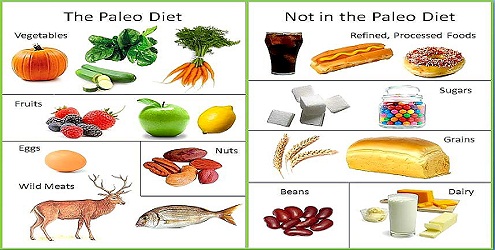What Is The Paleolithic Diet
20 Mar

The Paleolithic Diet, sometimes called the NeanderThin Diet or Caveman diet, is based on the diet that our Paleolithic ancestors had. Paleolithic points to the era of the Paleolithic Age, which is about 10,000 years ago.
Today, the Paleolithic Diet has become more than a diet, but an entire lifestyle.
The premise of the Paleolithic Diet is to replicate the diet of what our ancestors would have eaten. This is before the inception of animal husbandry and agricultural technology. Our ancestors were nomads and simply ate as much available foods that were dense in nutrients, and those which they could gather or hunt in whichever location they were at.
Principles of the diet rest on the belief that processed foods contribute to the development of diseases such as arthritis, heart disease, cancer, and immunologic-related diseases. Studies show that there is a significant decline in the health and stature of people, as changes went along in lifestyle and agricultural diet. Prehistoric hunters and gathers were four to six inches taller than succeeding farmers. These people also had fewer cavities, stronger bones, and generally lived longer lives. They had low levels of autoimmune diseases such as diabetes and arthritis and were rarely overweight or obese.
The vegetable sources of the Paleolithic diet are roots, tubers, plants, fruits, berries, and nuts. On the other hand, their animal sources include terrestrial animals (they consumed muscle tissue, organs, and fats of the animal), insects, fowl, seafood, and eggs.
These food items may be cooked. Although some believe in the raw factor of the diet in order to receive maximum nutrients, cooking is allowed. Food is lightly cooked in order to retain as much nutrition as possible. Frying should be avoided. Baking, steaming, or grilling is encouraged. The diet bans dairy and sugar consumption, generally processed foods in all its forms.
Results of a study made about the diet concluded that even the short-term practice of the diet can improve glucose tolerance and blood pressure, increase insulin sensitivity, decrease insulin secretion, and may improve the lipid profiles without the loss of weight, in sedentary but healthy individuals.
There are many medical conditions that can tremendously benefit from the Paleolithic diet. Examples of which is gluten ataxia, coeliac disease, Parkinson’s disease, multiple sclerosis, dermatitis, chronic fatigue syndrome, autism, schizophrenia, and attention deficit disorder. In addition, the risk of obesity, diabetes, other metabolic diseases including certain types of cancer, are reduced. I wrote a review based on my experience on Paleo recipe books available in the market. The book is full of 1000 fabulous Paleo recipes which will help you to improve your health conditions while almost all of them are really delicious. If you are interested to read my review on the best Best Paleo Cookbook then visit the given link.
Foods that are included in the diet have low glycemic index meaning, they release sugar slowly into the blood in order to provide the body with a more steady and consistent energy supply, leaving the bodies feeling satisfied for a longer period of time. The Paleolithic diet therefore, is a good weight loss program.
It is the goal of the diet for people to eat as closest to natural foods as possible. If you would like to incorporate this into your lifestyle, start with shopping right. When visiting the grocery stores, go straight to the meat, fruit, and vegetable counters. If you must purchase pre-packaged foods, choose those which do not have preservatives and must have as little ingredients as possible. Avoid chemicals, additives, and dyes.

No comments yet